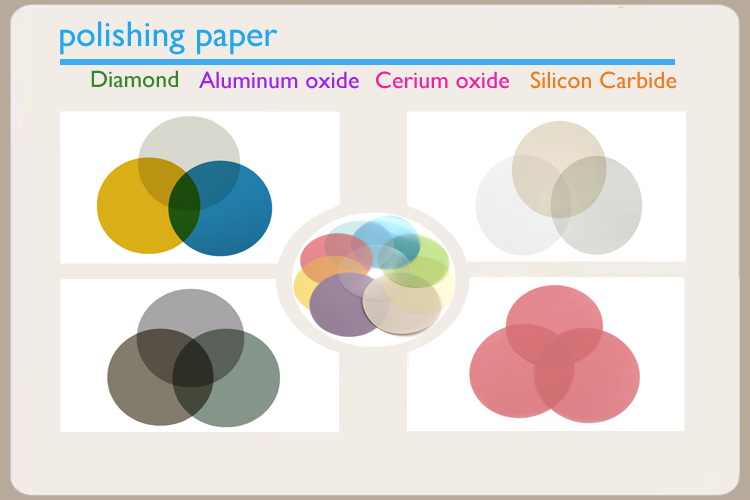The Importance of Polishing Paper and Other Supporting Materials in Fiber Optic Product Manufacturing
As a professional in the fiber optic industry, it is important to understand the role of polishing paper and other supporting materials in the manufacturing process. These materials are crucial to achieving high-quality fiber optic products that meet industry standards.

To begin with, polishing paper is used to remove any imperfections on the surface of fiber optic connectors. This is essential because even the slightest imperfection can cause signal loss, which can lead to poor performance and decreased reliability. The polishing process is also used to ensure that the connector has the proper geometry and surface finish, which is crucial for maintaining signal integrity.
In addition to polishing paper, other supporting materials such as diamond paste, lapping film, and polishing pads are also used in the manufacturing process. These materials are used to achieve a high level of precision and consistency in the polishing process. Diamond paste, for example, is used to achieve a mirror finish on connectors, while lapping film is used to remove any scratches left by the polishing process. Polishing pads are used to provide a consistent pressure during the polishing process, which is essential for achieving consistent results.
There are several fiber optic products and their components that require the use of polishing paper and other supporting materials in the manufacturing process. These include connectors, adapters, attenuators, and splitters. Each of these products requires a specific type of polishing paper and supporting materials to achieve the desired level of performance.
Connectors, for example, are one of the most critical components in fiber optic systems. They require a high level of precision and consistency in their manufacturing process to ensure that they meet industry standards. Polishing paper and other supporting materials are essential in achieving this level of precision.
Adapters, on the other hand, are used to connect two different types of connectors. They also require a high level of precision and consistency in their manufacturing process to ensure that they provide a reliable connection between the two connectors.
Attenuators are used to reduce the strength of an optical signal. They require a specific type of polishing paper and supporting materials to ensure that they maintain their accuracy and consistency over time.
Finally, splitters are used to split an optical signal into multiple paths. They require a high level of precision and consistency in their manufacturing process to ensure that they provide reliable and accurate signal splitting.
In conclusion, the use of polishing paper and other supporting materials is essential in the manufacturing process of fiber optic products. These materials are used to achieve a high level of precision and consistency, which is crucial for maintaining signal integrity and reliability. As a professional in the fiber optic industry, it is important to understand the role of these materials in the manufacturing process to ensure that you are able to deliver high-quality products that meet industry standards.
FAQs
1. What is the purpose of polishing paper in fiber optic product manufacturing?
Polishing paper is used to remove any imperfections on the surface of fiber optic connectors. This is essential because even the slightest imperfection can cause signal loss, which can lead to poor performance and decreased reliability. The polishing process is also used to ensure that the connector has the proper geometry and surface finish, which is crucial for maintaining signal integrity.
2. What other supporting materials are used in fiber optic product manufacturing?
Other supporting materials such as diamond paste, lapping film, and polishing pads are also used in the manufacturing process. These materials are used to achieve a high level of precision and consistency in the polishing process.
3. Which fiber optic products require the use of polishing paper and other supporting materials?
Connectors, adapters, attenuators, and splitters all require the use of polishing paper and other supporting materials to achieve the desired level of performance.
4. Why is precision and consistency important in the manufacturing process of fiber optic products?
Precision and consistency are important in the manufacturing process of fiber optic products because even the slightest imperfection can cause signal loss, which can lead to poor performance and decreased reliability.
5. How can I ensure that I am delivering high-quality fiber optic products that meet industry standards?
To ensure that you are delivering high-quality fiber optic products that meet industry standards, it is important to understand the role of polishing paper and other supporting materials in the manufacturing process. You should also stay up-to-date with industry standards and regulations, and invest in quality control measures to ensure that your products meet or exceed these standards.
Keywords: polishing paper, fiber optic products, connectors, adapters, attenuators, splitters, diamond paste, lapping film, polishing pads, signal integrity, reliability, precision, consistency.

 The Future of Fiber Optic Communication Network Architecture: Evolution and the Role of SDON Technology
The Future of Fiber Optic Communication Network Architecture: Evolution and the Role of SDON Technology
 What opportunities and challenges does free-space optical communication technology face?
What opportunities and challenges does free-space optical communication technology face?
 Opelink MPO Products for High-Speed Data Center Applications
Opelink MPO Products for High-Speed Data Center Applications
 CWDM vs. DWDM: Which Optical Transmission Technology Should You Choose?
CWDM vs. DWDM: Which Optical Transmission Technology Should You Choose?